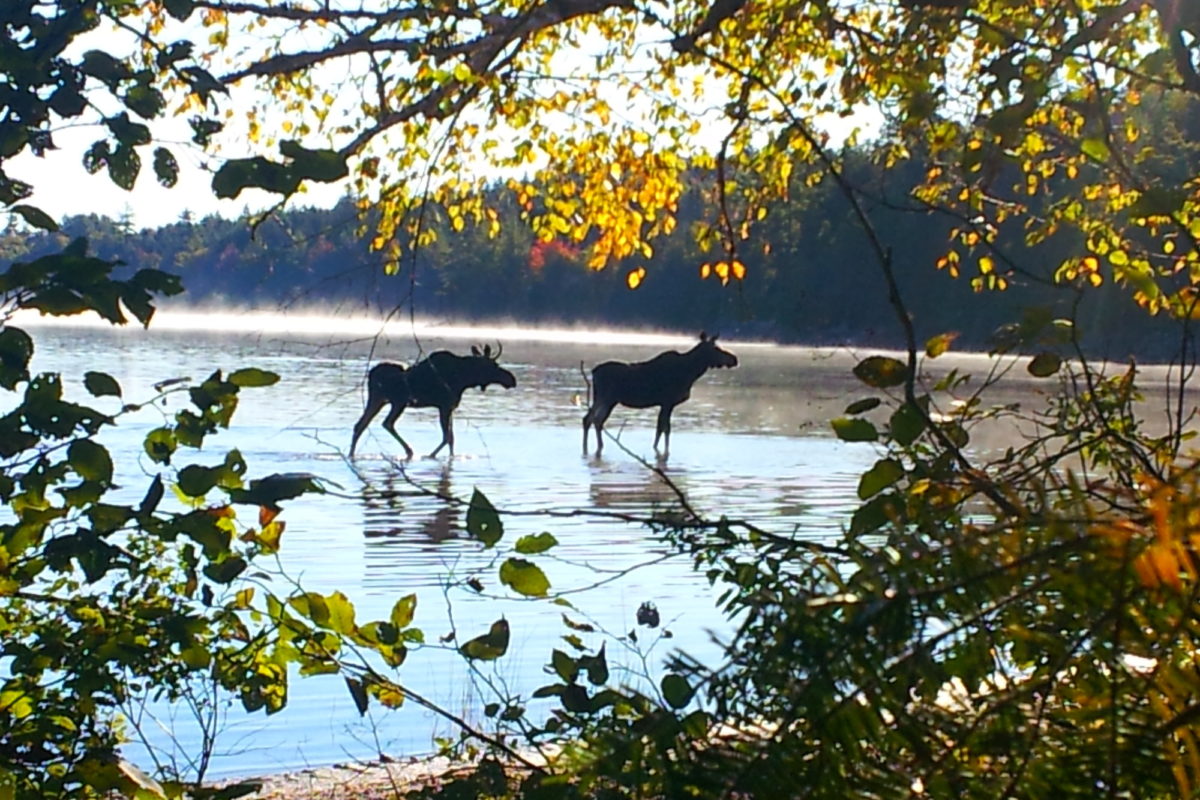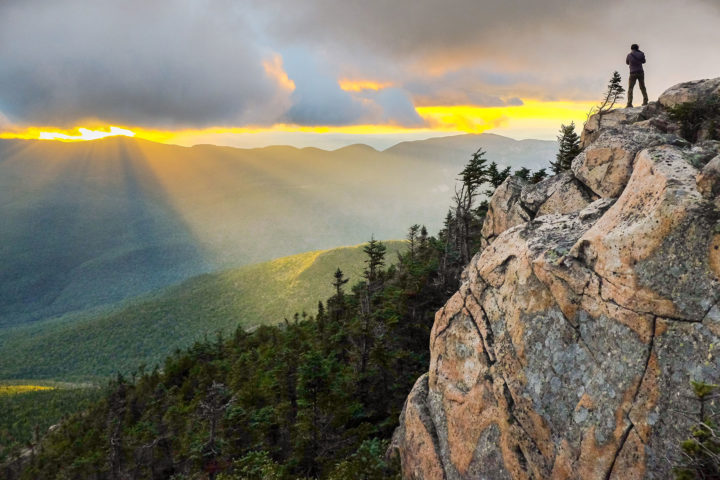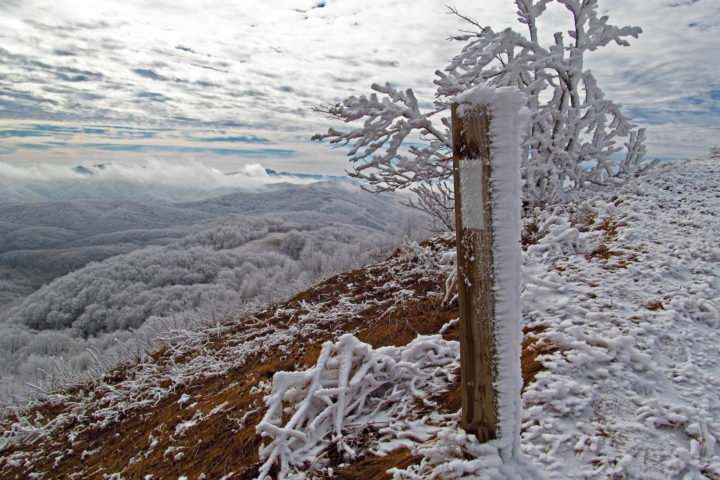A.T. Miles in State
ME Trail Updates
Elevation Range
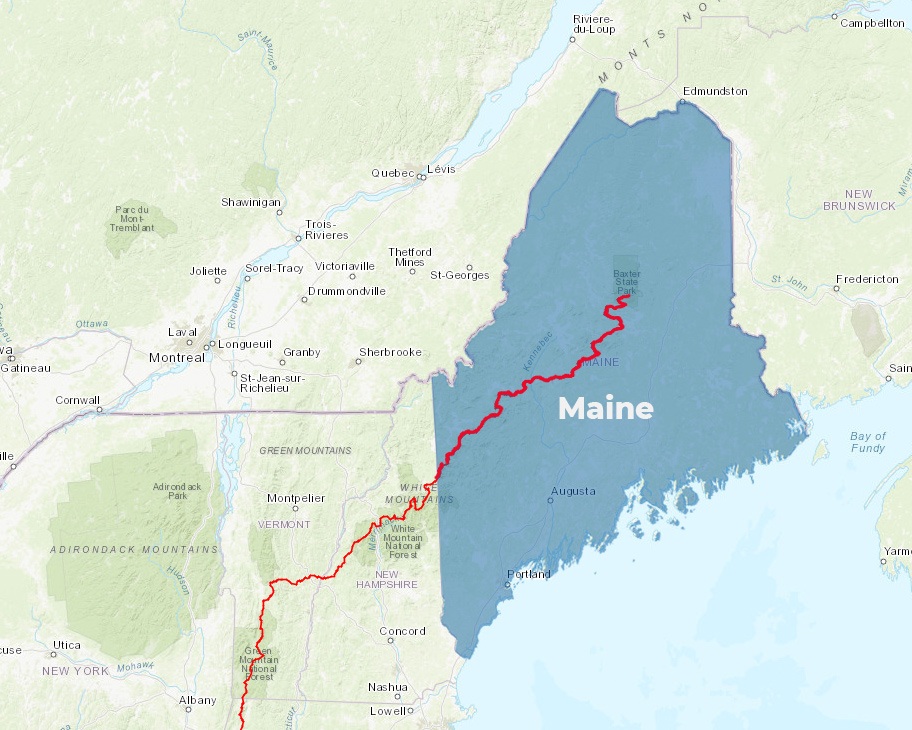 The A.T. in Maine is wild, spectacularly scenic, challenging and ultimately fulfilling. Maine’s tallest mountain, Katahdin, is the Trail’s northern terminus and typically the beginning or the satisfying end of a thru-hike, a journey by foot of all 2,190+ miles of the A.T. that is undertaken by thousands each year.
The A.T. in Maine is wild, spectacularly scenic, challenging and ultimately fulfilling. Maine’s tallest mountain, Katahdin, is the Trail’s northern terminus and typically the beginning or the satisfying end of a thru-hike, a journey by foot of all 2,190+ miles of the A.T. that is undertaken by thousands each year.
Maine is the A.T.’s most challenging, rugged and remote state, and it has the wildest feel of any area of the Trail. Maine offers some exciting features that are uncommon elsewhere on the A.T., including wildlife like moose and loons and pristine lakes. It’s also famous for hosting the hardest mile of the Trail: Mahoosuc Notch. The notch challenges even the most intrepid hikers and going through this mile-long, boulder-filled canyon is often likened more to scrambling than hiking!
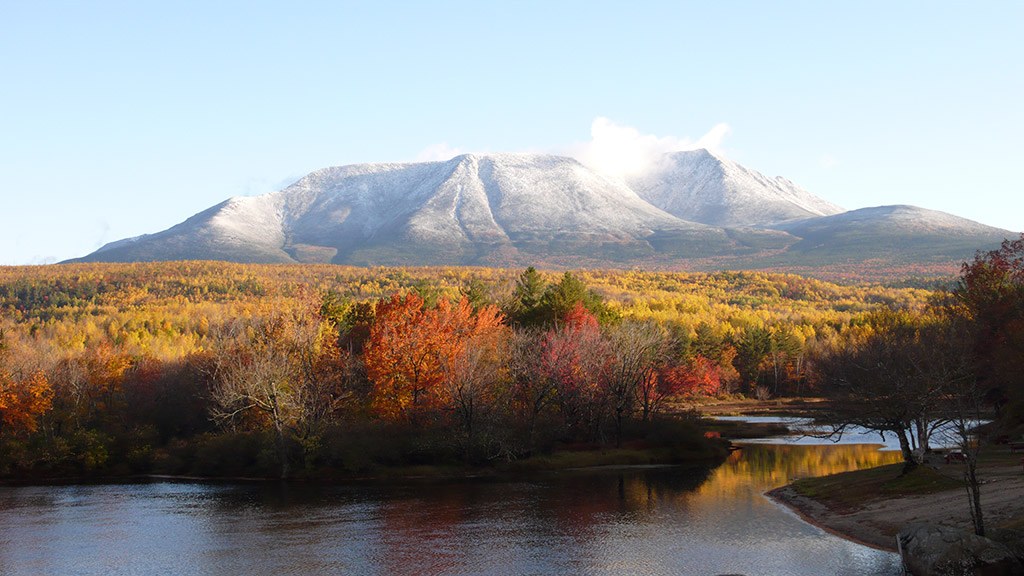 Maine is famous for its unbridged stream crossings, which are often extremely dangerous after spring snowmelt and heavy rains. The Kennebec River, the widest unbridged crossing, has a ferry service in the form of a canoe during hiking season. This is the A.T.’s official and historic route; fording the river is extremely dangerous because the water level can rise rapidly and without warning.
Maine is famous for its unbridged stream crossings, which are often extremely dangerous after spring snowmelt and heavy rains. The Kennebec River, the widest unbridged crossing, has a ferry service in the form of a canoe during hiking season. This is the A.T.’s official and historic route; fording the river is extremely dangerous because the water level can rise rapidly and without warning.
Everyone is welcome. Long-distance hikers are able to obtain information about the Baxter State Park hiker permit. Staff are available to help plan logistics for the 100 Mile Wilderness and Katahdin. Trail conditions posted daily. Community and day hike information also available.
Open seasonally from June through October. Visit our Monson Visitor Center page for current dates and hours.
Address: 6 Tenney Hill Rd., Monson, ME 04464
Phone: 413-200-0313
Email: monsonvisitorcenter@appalachiantrail.org
Facebook: www.facebook.com/monsonatvisitorcenter
Note to those visiting: The center is located in the Monson Historical Society building on the town’s main street (Route 6/15).
Baxter State Park operates under a unique management system that prioritizes the park’s wilderness character. Learn more about this special place and why its important for northbound A.T. hikers to “finish well” on Katahdin.
As part of that management, all A.T. hikers are required to get a free long distance hiker permit before summiting Katahdin. This applies to all A.T. hikers: Northbound Thru-Hikers (NOBOs), Southbound Thru-Hikers (SOBOs), Flip-Flop Thru-Hikers and Section-hikers. Permit cards must be picked up in person at the Katahdin Stream Ranger Station before climbing the Hunt Trail (the A.T. route up Katahdin).
NOBO thru-hikers and section hikers who have hiked continuously through the 100 Mile Wilderness (not left the Trail corridor to go back into a town) are eligible to stay at the Birches, the park’s campground for long-distance hikers. All other hikers must have either a campground reservation or a Katahdin Trailhead Permit to enter the park and hike the mountain. Learn more
For more information, please visit the Baxter State Park webpage.

The Maine Appalachian Trail Club (MATC) is an all volunteer, nonprofit corporation that was organized on June 18, 1935, to assume responsibility for the management, maintenance and protection of the Appalachian Trail (AT) in Maine. Except for its limited role in Baxter State Park, the MATC is responsible for all Trail and Trail structure design, construction, and maintenance, for monitoring activities in the AT corridor, and for basic public information and education regarding the Trail in Maine. Consider joining MATC today!
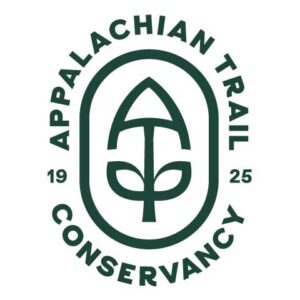
The Appalachian Trail Conservancy is always looking for dedicated volunteers to help maintain the A.T. and assist in our visitor centers and headquarters. Opportunities range from greeting visitors and providing information about local hikes to joining a Trail crew for week-long maintenance trips, gaining first-hand experience in what it takes to keep the A.T. open and enjoyable for millions each year. Learn more at appalachiantrail.org/volunteer.
The Appalachian Trail Landscape Partnership is a dedicated coalition of local, state and federal partners led by the Appalachian Trail Conservancy and the National Park Service.
Wide-open vistas beyond the footpath offer respite and are essential to the Wild East.
Wide-open views, crisp air and solitude make for a cool hike, but when winter hiking, being prepared is key.
